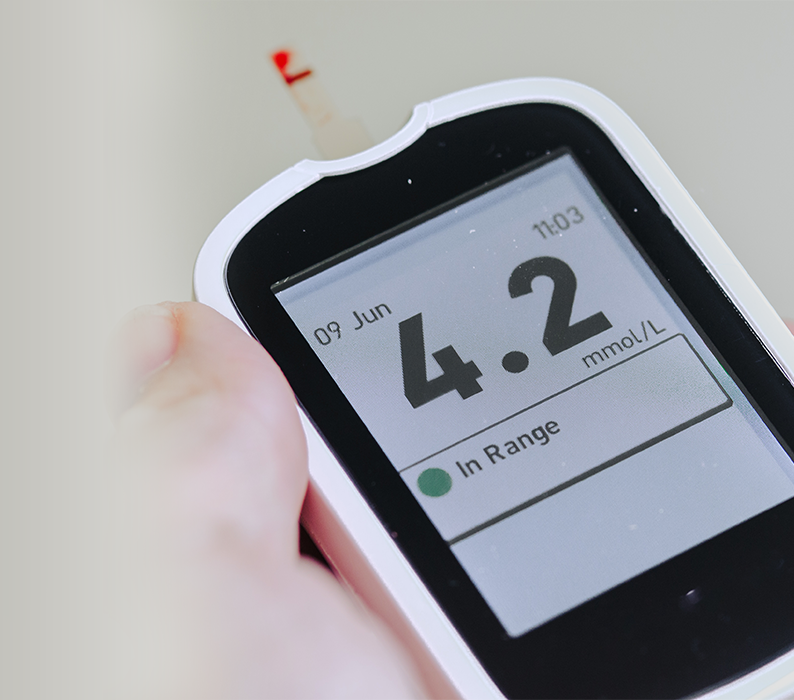An introduction to exercise and diabetes
Exercise is widely recognised as an important component of maintaining good health; however, for people with type 1 diabetes, engaging in physical activity can be particularly challenging due to its potential impact on blood glucose levels.
Let us help you get those endorphins going!
Why exercise?
Exercise is important for everyone because it sharpens the mind, tones the body and strengthens the heart.
Exercise can also combat depression, improve wellbeing, minimise stress, and lower body fat and cholesterol levels.1
For people with type 1 diabetes, exercise is important for other reasons2.
- It increases insulin sensitivity, which helps the body use insulin more effectively
- It can help support healthy blood pressure, which is important to reduce the risk of diabetes complications
- It can help you lose weight if you need to
- It can give you more energy and help you sleep
- It can help with your joints and flexibility
- It can help improve stress levels and improve low mood
But it’s not that simple… is it?
Exercise is important for everyone because it sharpens the mind, tones the body and strengthens the heart.
Exercising and Glucose Levels
When you exercise, glucose is your main source of fuel. This includes both blood glucose (BG), as well as glucose that has been stored by your body.
For your muscles to use this glucose for fuel during exercise, your body needs to have adequate levels of insulin.
Too little insulin can force the body to break down fat for fuel, causing a buildup of ketones in the blood that can lead to diabetic ketoacidosis (DKA).
Too much insulin will cause blood sugars to drop, leading to hypoglycaemia.
It’s understandable that you might be anxious when it comes to exercise with diabetes. Diabetes UK have put together this guidance and advice to help you feel confident managing your blood sugar levels when moving more.3
Not all types of exercise are created equal
Different types of exercise can affect your blood glucose in different ways. This information should help you plan accordingly.
Regardless of the type of exercise, it’s a good idea to bring hypo snacks and insulin with you so that you’re prepared and feel safe.
AEROBIC EXERCISE
Blood glucose tends to drop with aerobic exercise.
Studies suggest reducing your basal insulin before prolonged aerobic exercise can help improve glucose control and reduce the risk of hypoglycaemia.4
Examples: Cycling, Running, Swimming
MIXED AEROBIC AND ANAEROBIC EXERCISE
Blood glucose levels tend to stay more stable with these types of activities.
You will want to monitor blood sugars frequently to avoid hypoglycaemia or hyperglycaemia.
Depending on your blood glucose, you may consider a snack or temporary change in basal rate if needed.
Examples: Football, High Intensity Interval Training, Basketball
ANAEROBIC EXERCISE
Blood glucose may spike during anaerobic exercise.5
You may need to correct elevated blood glucose levels after anaerobic exercise, or you may consider setting an increased temporary basal on your pump prior to these activities.
Example: Weight Training
Timing and Insulin Adjustments for Aerobic Exercise5,6
Balancing activity with carbs and insulin can be challenging.
Keeping track of what works for you can help you limit how often you experience low blood glucose. Timing plays a big role in getting the right balance.4
Everybody will have slightly different needs, but you might benefit from adjusting your insulin as much as 90 minutes before you exercise.
You may want to adjust both your pre-meal bolus and basal rate - especially if you are exercising in the evening. Strenuous exercise can affect your BGs up to 36 to 48 hours later6.
For better control during exercise, consider5:
• How strenuous the activity is
• How long it will last
• The timing of the exercise relative to recent meals and boluses
The longer and more strenuous an activity, the more you need to decrease your bolus and basal doses to prevent hypoglycaemia.
If you exercise within 2 hours of eating a meal, consider reducing your pre-meal bolus, or eating extra carbs.
If you exercise more than 2 hours after eating a meal, consider a temporary decrease in basal insulin.
More Tips for Managing Your Blood Glucose Levels During Exercise
No two days are the same when you live with type 1 diabetes. It’s normal that your blood glucose levels may vary even if you do the same type of activity and eat the same types of foods. This can be frustrating!
These tips from Diabetes UK might be a useful starting point if you’re starting to exercise with type 1 diabetes and want to feel more confident about your blood sugar levels.3
- Keep a record of what happens to your blood glucose levels when you’re active to help you spot patterns. Over time this may help you with carbohydrate or insulin adjustments
- Keep hypo treatments handy in case of hypos. A snack with some carbs in like a sandwich, a piece of fruit or a cereal bar is also a good idea
- Wear or carry your diabetes ID
- Stay hydrated!
You may also want to speak to your healthcare team for more advice. They can help you figure out which adjustments are needed.
Remember nothing is perfect when you start something new.
The more you exercise, the more you’ll learn about your body and how it responds to different types of exercise at different times of the day.
With a little bit of planning, the benefits of exercise will be worth it. Just remember to keep supplies on you to help you feel safe and more confident.
Related Articles
Other topics
References and Disclaimers
1 https://www.nhs.uk/live-well/exercise/exercise-health-benefits/
2 https://www.diabetes.org.uk/guide-to-diabetes/managing-your-diabetes/exercise
3 https://www.diabetes.org.uk/guide-to-diabetes/managing-your-diabetes/exercise/blood-sugar-levels
4 Zaharieva DP, McGaugh S, Pooni R, et al. Improved Open-Loop Glucose Control with Basal Insulin Reduction https://diabetesjournals.org/care/article/42/5/824/40510/Improved-Open-Loop-Glucose-Control-With-Basal
5 Ridell M, Gallen I, Smart C, et al. Exercise Management in Type 1 diabetes: a consensus statement. Lancet Diabetes Endocrinol 2017; 5:377-390. Exercise management in type 1 diabetes: a consensus statement - PubMed
6 Walsh J and R Roberts. (2016). Pumping Insulin (6th Ed.) San Diego, CA: Torrey Pinese Press
This article is not a substitute for medical or healthcare advice, recommendations and/or services from a qualified healthcare provider.
This article may not be relied upon in any way in connection with your personal healthcare, related decisions and treatment. All such decisions and treatment should be discussed with a qualified healthcare provider who is familiar with your individual needs.



